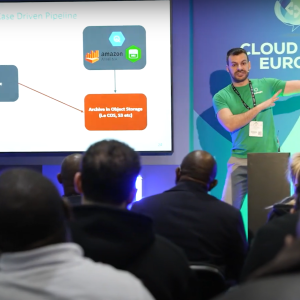
When most businesses think about Internet of Things they think about data and improved efficiency but not about what it means for the shape of the enterprise network in the future.
Some are predicting the need for faster networks in order to deal with the increased data created by sensors and other devices.
But the quantity of data created by IoT projects is so vast that it will be practically impossible to send all that information back to a central data centre for storage and processing.
For example an Airbus A350 creates about 250GB of data per flight – some of this needs to be communicated immediately to the flight crew, some needs to go to the maintenance crew at the destination airport and some will feed back to Airbus factories to improve future design and production.
A typical enterprise IoT project could create even larger amounts of data.
The scale of the data created by IoT is just one reason that Hewlett Packard Enterprise is betting that the real impact of IoT will be to push the data centre to the edge of the network – where the data is created.
Putting some of the intelligence close to the edge will give enterprises several advantages. Daily analysis will be carried out there while the central data centre takes a more long-term and strategic view of the information collected.
Day-to-day, or operational IT, will shift from the traditional data centre or cloud environment to the shop floor or the factory.
This distributed network will have compute and storage power in mini-servers which can work in a real world environment.
This sort of structure solves several IoT challenges at the same time.
Firstly it deals with the bandwidth issue. Simply adding a network of IoT sensors onto existing systems means your network will quickly fill up with sensor data the vast majority of which is useless. Setting up a dedicated IoT network moves the problem but does not actually solve it.
Central systems do not need to know the temperature of every sensor in an office building. They might need to know when several sensors near each other exceed pre-set temperature limits so they can adjust heating or cooling systems but sending constant updates is a waste of bandwidth.
At the same time pushing compute to the edge deals with latency – even the very best network is not instant. For some systems acting very quickly on data received is vital, if a component on a factory line is about to fail then action needs to be taken straight away. Along with latency there can also be straight communication breaks or failures. Wireless and GSM networks are not perfect and even a very short break could disrupt or corrupt data.
Many industry observers have warned that IoT networks can create new security threats for the business. Reducing the amount of data sent across networks can reduce this risk, although the devices themselves remain a potential way in for attackers. Cutting the amount of communication these devices do with central servers might make it easier to spot suspicious activity on your systems.
Removing all of the above issues should also remove a lot of costs from the budget.
But there are other issues too.
In a world of increasingly fractured data protection and privacy regulations companies operating across borders are well advised to keep processing and storage in the same area where the information is collected. Complying with different rules in different countries is an expensive business.
None of this means that Internet of Things will see the end of the data centre. But it makes sense that the grunt work and basic analysis of IoT does not clog up networks and uplinks to cloud providers.
Think of it like the anti-lock braking system on a car – instead of telling the driver the wheels are locked up and waiting for a response the system can apply and release the brakes a dozen times per second automatically.
Enterprises will want IoT that perform in the same way.
There’s more from Dr. Tom Bradicich, an HPE VP and GM of Servers and IoT systems, on this blog.
https://news.hpe.com/7-reasons-why-we-need-to-compute-at-the-edge/






